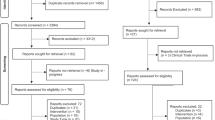Abstract
Piritramide is a synthetic opioid commonly used in Germany and Austria for the analgesia of pediatric patients. Little pharmacokinetic and pharmacodynamic data for the pediatric population is available. The aim of this investigation was to gain pharmacodynamic data on postsurgical analgesia and the side effects of piritramide. The study was approved by the Ethics Committee of the Medical Faculty. Data were collected in an open, prospective clinical trial. After obtaining the parents’ informed written consent, patients received a bolus of piritramide 50 μg/kg for postsurgical analgesia or to prevent pain resulting from invasive procedures. Titration doses of 15 μg/kg were allowed. Vital signs and pain intensity were closely monitored. Data from 39 patients could be included in the analysis. Of the patients, 95% were in the immediate postsurgical course, 5% had piritramide for invasive procedures, and 46% of the patients were ventilated. The mean piritramide dosage was 64 ± 24 μg/kg. Pharmacodynamic analysis showed adequate analgesia for at least 50% of the spontaneously breathing patients for 120 min after piritramide bolus. More than 50% of the ventilated patients showed inadequate analgesia at any point in time after piritramide bolus. Fifty-nine percent (59%) of the ventilated patients received additive analgesia versus 31% of spontaneously breathing patients. No relevant changes of vital signs could be observed. One patient received naloxone for apnea. We conclude that dosages of more than 50–70 μg/kg are needed for sufficient analgesia in ventilated postsurgical infants. In spontaneously breathing patients, 50–70 μg/kg provides a 120-min period of analgesia for more than 50% of patients. Cardiovascular stability of the patients was good and, with one exception, there was no respiratory depression


Similar content being viewed by others
References
Anand KJS, Aynsley-Green A (1988) Measuring the severity of surgical stress in newborn infants. J Pediatr Surg 23:297–305
Aretz S, Licht C, Roth B (2004) Endogenous distress in ventilated full-term newborns with acute respiratory failure. Biol Neonate 85:243–248
Bouillon T, Kietzmann D, Port R, Meineke I, Hoeft A (1999) Population pharmacokinetics of piritramide in surgical patients. Anesthesiology 90:7–15
Bouillon T, Groeger P, Kietzmann D (2004) The pharmacokinetics of piritramide after prolonged administration to intensive care patients. Eur J Anaesthesiol 21:673–678
Breitfeld C, Peters J, Vockel T, Lorenz C, Eikermann M (2003) Emetic effects of morphine and piritramide. Br J Anaesth 91:218–223
Bremerich DH, Neidhart G, Roth B, Kessler P, Behne M (2001) Postoperative Schmerztherapie im Kindesalter. Anästhesist 50:102–112
Büttner W, Finke W (2000) Analysis of behavioural and physiological parameters for the assessment of postoperative analgesic demand in newborns, infants and young children: a comprehensive report on seven consecutive studies. Paediatr Anaesth 10:303–318
Freye E (1991) Postoperative pain treatment (in German). Anaesthesiol Reanim 16:379–392
Gibb DB, Pickler N (1973) Piritramide—a new long-acting analgesic. Anaesth Intensive Care 1:308–314
Hartwig S, Roth B, Theisohn M (1991) Clinical experience with continuous intravenous sedation using midazolam and fentanyl in the paediatric intensive care unit. Eur J Pediatr 150:784–788
Hünseler C, Merkt V, Gerloff M, Eifinger F, Kribs A, Roth B (2006) Beurteilung von Schmerzempfinden und Sedierungsgrad bei beatmeten Neugeborenen und Säuglingen: Validierung eines Schmerz- und Sedierungs-Scores (Hartwig-Score). Zeitschrift für Geburtshilfe und Neonatologie S 1
von Jöhr M (1998) Kinderanästhesie, 4th edn. Gustav Fischer, Lübeck, Ulm, Germany
Kietzmann D, Briede I, Bouillon T, Gundert-Remy U, Kettler D (1996) Pharmacokinetics of piritramide after an intravenous bolus in surgical patients. Acta Anaesthesiol Scand 40:898–903
Müller C, Kremer W, Harlfinger S, Doroshyenko O, Jetter A, Hering F, Hünseler C, Roth B, Theisohn M (2006) Pharmacokinetics of piritramide in newborns, infants and young children in intensive care units. Eur J Pediatr 165:229–239
Petrat G, Klein U, Meissner W (1997) On-demand analgesia with piritramide in children. A study on dosage specification and safety. Eur J Pediatr Surg 7:38–41
Saarne A (1969) Clinical evaluation of the new analgesic piritramide. Acta Anaesthesiol Scand 13:11–19
Sittl R, Mogendorf F, Huber H, Boujong D, Märkert D (1992) Patientenkontrollierte Schmerztherapie auf einer kinderchirurgischen Station nach Trichterbrust-Operationen. Anästhesist 41:176
Weyne F, Schluter J, Lust P (1968) Piritramide, a potent postoperative analgesic with unusually low respiratory depressant, cardiovascular and emetic effects. Acta Anaesthesiol Belg 1:33–45
Zernikow B (ed) (2003) Schmerztherapie bei Kindern, 2nd edn. Springer, Berlin Heidelberg New York
Author information
Authors and Affiliations
Corresponding author
Rights and permissions
About this article
Cite this article
Huenseler, C., Borucki, D., Mueller, C. et al. Prospective evaluation of the pharmacodynamics of piritramide in neonates and infants. Eur J Pediatr 167, 867–872 (2008). https://doi.org/10.1007/s00431-007-0601-1
Received:
Revised:
Accepted:
Published:
Issue Date:
DOI: https://doi.org/10.1007/s00431-007-0601-1




